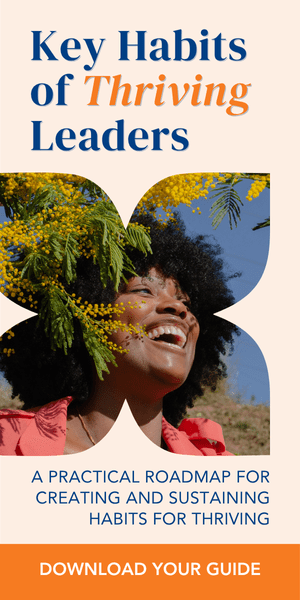“You never change things by fighting the existing reality. To change something, build a new model that makes the existing model obsolete.” – Buckminster Fuller
 To me, the visionary architect fondly known as Bucky Fuller was spot on. Creating a world that works for the wellbeing of everyone means designing solutions that draw on yet supersede our past without combatting or condemning it … solutions that uplift our worldviews, connectedness, and capabilities as human beings. And after years of helping leaders make wellbeing a priority in companies and communities, I’m struck with this notion: the best, most ingenious wellbeing solutions are often the simplest.
To me, the visionary architect fondly known as Bucky Fuller was spot on. Creating a world that works for the wellbeing of everyone means designing solutions that draw on yet supersede our past without combatting or condemning it … solutions that uplift our worldviews, connectedness, and capabilities as human beings. And after years of helping leaders make wellbeing a priority in companies and communities, I’m struck with this notion: the best, most ingenious wellbeing solutions are often the simplest.
It a testament to the human spirit that within the most challenging of situations, our creativity and resourcefulness flourishes to expand wellness on every level – as individuals, groups, neighborhoods and communities, workplaces, and the planet as a whole. Globe-wide, wellbeing leaders of all ages and circumstances are inventing life-enhancing technologies made easier to scale because of their clever design …
- Dutch company Plant-e is harvesting electricity from plants using methods safe for plants, people, and the planet. Already, the company’s Starry Sky project uses plant-based electricity to power cell phone chargers, Wi-Fi hotspots, and over 300 LED streetlights in The Netherlands. (As a clean option in the global energy conversation and a move toward self-sufficiency, I wonder: Will we be able to one day fuel our own lives and work with plant-based energy grown at home?)
- Developed by Canadian scientist Dr. Christopher Charles, the Lucky Iron Fish may help mitigate anemia in billions of people worldwide. Not only is the fish a symbol of good luck, cooking with it can provide up to “75 percent of an adult’s daily iron intake and nearly 100 percent for children,” crucial in world regions where iron supplements are not accessible or affordable.
- The Clay Pot Refrigerator created by teacher Mohammad Bah Abba and improved upon by potter Mansukhbhai Prajapati keeps perishable food and beverages fresh in climates without electricity. Today alone this means the simple device could affect a staggering 1.3 billion people worldwide.
- When a 20-year-old decides to cut ocean pollution in half – yes, in half! – I beam at the wellbeing leadership he’s bringing to our planet. (And after he finishes cleaning up the ocean – no small feat! – I’m intrigued by what he’ll be up to next!) Entrepreneur Boyan Slat found nonprofit The Ocean Cleanup, a massive effort using the ocean’s natural undercurrents to push aquatic waste (such as plastics) into floating barriers where it can be effectively removed without harming marine life.
- Dying well is an intimate part of living well, so the new approach offered by Italians Anna Citelli and Raoul Bretzel to promote green cemeteries is quite a meaningful wellbeing innovation. Their Capsula Mundi project suggests humans can be buried in an egg-shaped contained and planted like a seed to become fertilizer for a tree planted on top of it. The bigger vision: the duo are reimagining cemeteries as sacred forests.
What wellbeing leadership stories inspire you to think beyond the status quo? Please share! As we pass innovations in leading wellbeing forward, more of us are bolstered to use our human creativity to be, as Bucky Fuller so aptly says, “architects of the future, not its victims.”
READ MORE
- 10 Quotes for Leaders Who Want to Thrive: Just What the Doctor Ordered!
- Let’s Make 2015 the Year of the Ministry of Wellness
- Boost Flourishing At Work With Tips from University of Minn Exec Mary Jo Kreitzer
- 55 Countries Celebrating Global Wellness Day: Are You?
Shutterstock Image: 215672470






